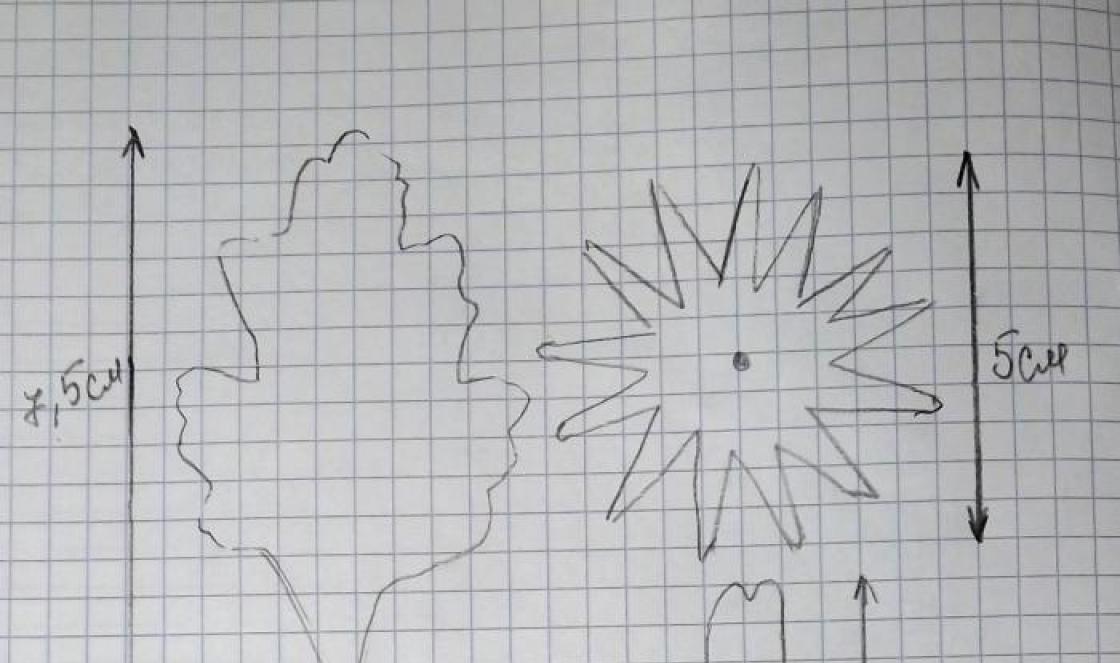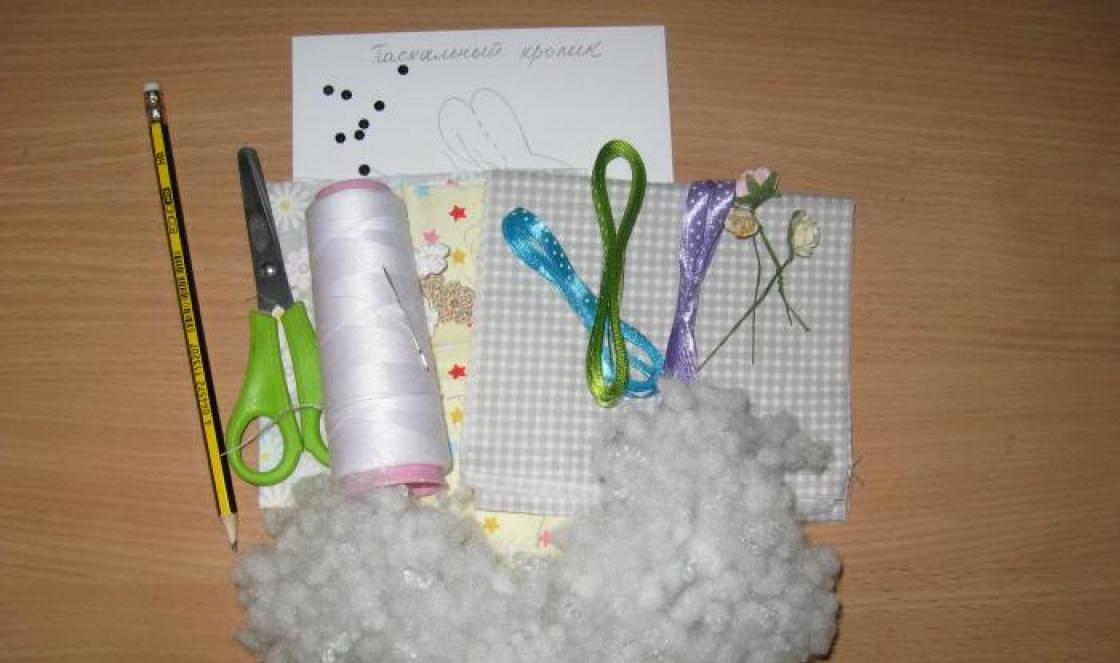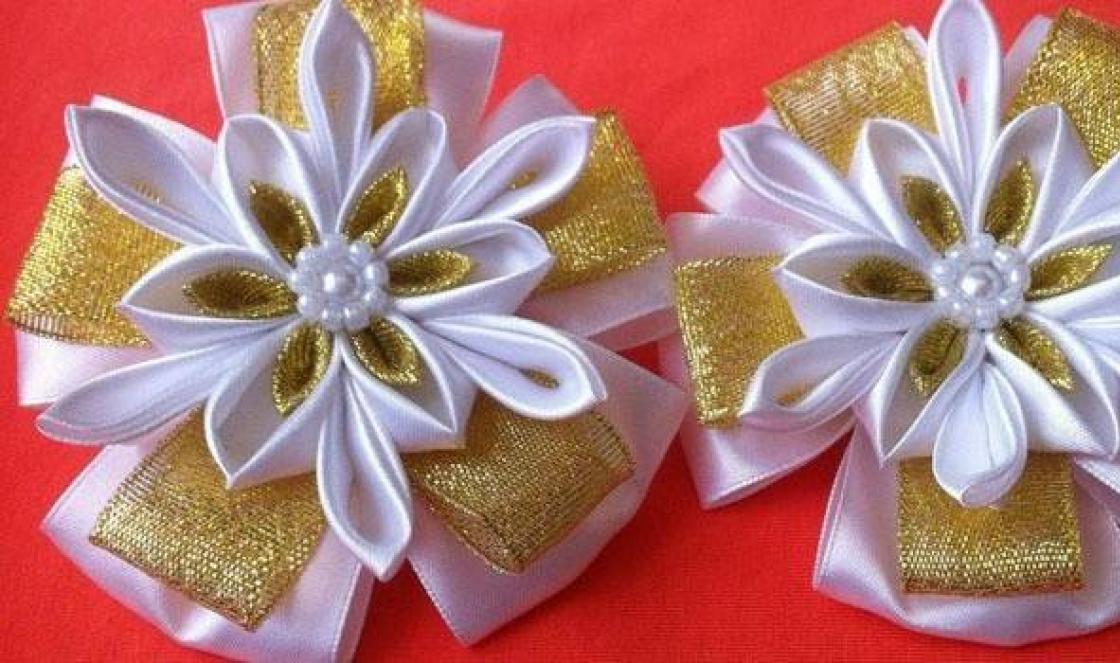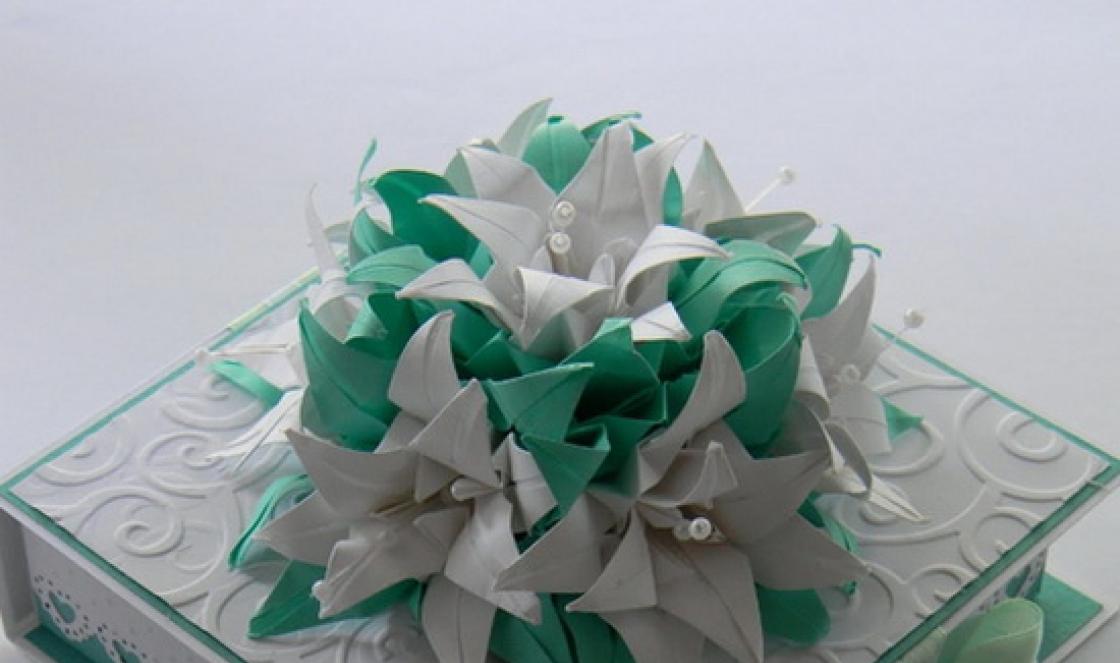Ekaterina Frolova
Good evening, afternoon, morning! I want to share with you my idea of creating a pen for quilling. I'm getting carried away I've been quilling for almost five years now., and like all beginners, she began to twist on everything that came to hand - a toothpick, an awl. And suddenly I saw in the store quilling tool, bought it and was disappointed in
Well, I didn’t like it, it didn’t seem very comfortable, it was thick, the handle itself was short and didn’t fit well in the hand, and I started thinking about how to fix the situation, but I couldn’t find anything suitable, so I decided to make it myself! This is what I got!

I bring to your attention a small master class on making pens for quilling.
We will need gel pen housings, tapestry sewing needles with a gold eye, a glue gun and pliers.

promote

take a glue gun, a needle and pliers

“bite off” a piece of the “eye” from the needle


insert a needle into the pen cap to the middle and fill it with hot glue

Quickly tighten the handle itself before the glue cools down.

and here he is my favorite (comfortable) quilling tool.

The pens look neat and beautiful!

Children really enjoy spinning the workpieces with these tools!
I wish you all creative success! I will be glad if you find my master class useful! Thank you for your attention!
Quilling, a special paper rolling technique, has gained immense popularity. People of any age group today engage in this type of art. They make various crafts, turning handicrafts into their hobby. Thanks to paper filigree, they create paintings, three-dimensional panels and figures, and also decorate boxes and postcards with floral arrangements and patterns. To create their masterpieces, they use multi-colored paper strips of different lengths and widths, as well as a special tool designed for such work.





Many specialized stores sell ready-made sets of rulers and tools that make the job easier.
Quilling paper purchased there is not expensive, which allows you to create bright, high-quality crafts without much hassle. A quilling stick is designed to twist such a basic element as a tight and loose spiral, from which many other shapes are subsequently created. Followers of eastern masters roll paper rolls using a thin awl, holding the tip of the strip with their finger at the beginning of the work.
With this labor-intensive process, the spirals are neat, with a small center.
More common specimens have a comfortable handle and a fork at the end of the tool, into which the edge of the strip is inserted, followed by the formation of a spiral.
Home remedies
There is also a budget option, namely: everyone in the household has glue, tweezers, and small nail scissors. Special rulers and ready-made diagrams can be replaced with sheets of graph paper and sewing pins. Make strips at home by cutting them from medium-weight colored paper. Instead of sticks, paper clips, knitting needles, toothpicks, and the like are widely used.
Video: DIY quilling stick
How can I replace a quilling stick?
To make a tool similar to a stick, the most common available tools that can be found in every home are suitable, namely:
- used felt-tip pens or ballpoint pen refills;
- cortical plug;
- toothpick, pencil.
There are several options for making a quilling stick with your own hands. Use a regular toothpick, removing the sharp end and splitting it with a knife. You can do without cuts, just use it whole.
Take an empty refill for regular ink and carefully make a small cut along it with a stationery knife about 5 mm. That's it, the quilling stick is ready. Pick up two needles and a gel pen refill. Get rid of the metal tip and any remaining ink. Place two needles inside so that the ends of the required length peek out from the outside, insert part of the toothpick between the two needles, thereby fixing them.
Make a stick using a cork plug and a needle. To do this, its ear is broken and the sharp end is inserted into the cork.

Quilling, or paper rolling, is a technique for creating planar and three-dimensional images from twisted strips of paper.
Paper mosaic does not require special expenses, talents or a lot of time to master the technique. The elements are used to create panels, postcards, album covers, decor for boxes and many other interesting decorations and crafts. Be sure to add this budget craft to your list of hobbies. It is suitable for both adults and children's creativity.
Where did the quilling technique come from?
Paper plastics appeared in Europe in the 15th–16th centuries. At that time, paper rolling was considered a high art. By the 19th century, quilling had become an activity worthy of noble ladies. In Russia, the hobby gained popularity only towards the end of the 20th century.
The most refined works in the quilling technique belong to Korean masters. They do not use rods to curl the paper, but rather do it by hand. First, needlewomen create small elements from which they create three-dimensional products or flat decor. The results are very elegant crafts that resemble jewelry and lace.

Using rolled strips of paper, you can create a picturesque mural for an empty wall or create a stunning card for a loved one. In any case, you will get a lot of pleasant emotions from creating a new beautiful thing. This hobby is suitable for romantic, creative people who like to surround themselves with beautiful things.
Quilling is a type of needlework that involves making compositions twisted into spirals (rolls). This is, in its own way, art. From such a simple material as paper, complex compositions can be made. These can be individual panels, paintings or figurines for decorating postcards, interior items, wedding accessories and other things. It's amazing how exquisite things can be created using strips of paper and quilling tools - photos of finished works on the Internet can amaze even the richest imagination! Another name for quilling is paper rolling.
A simple and budget hobby
Unlike many other types of needlework, quilling does not require significant costs or special abilities. Anyone can master the technique of rolling paper strips. What else is remarkable about quilling is that tools and materials can be purchased in ready-made kits or made independently from scrap materials.
Paper rolling will appeal to those who have patience, love painstaking work, who like to do handicrafts, who enjoy the process of creating something beautiful with their own hands.
What do you need for quilling?
To create simple compositions using the quilling technique, you don’t need a lot of equipment. Here is a list of what you will definitely need:
- Narrow long strips of paper.
- A tool for twisting them into spirals.
- Scissors.
- Glue. The best is PVA, a bottle with a narrow neck.
- Ruler with circles of different diameters.
- Tweezers, preferably with sharp ends.
With all of the above at hand, you can begin to understand the basics of paper rolling and create your own compositions. You can purchase a quilling tool at a craft store or make one yourself. There are other devices for those who have already outgrown the basic level, can create complex things out of paper, or are engaged in quilling on a professional basis.
Paper strips are the main material
In the art of paper rolling, the main material is narrow strips of double-sided colored paper. They are sold in packages in specialized stores. Sets can consist of stripes of the same color or multi-colored. Sometimes paper strips are included in a quilling tool kit. Some needlewomen prefer to cut sheets of paper themselves.

Typically, strips of narrow (3 mm), medium width (5 and 7 mm) and wide (10 mm) are used in quilling. Not every paper is suitable for this type of needlework. It is important that it be of a certain density. Paper that is too thin does not hold its shape, and making figures from it is difficult and inconvenient. The optimal thickness, according to craftswomen, is at least 60 grams per square meter.
Roller - the main tool for quilling
Essentially, it is a rod with a forked end. But followers of the Eastern school of paper rolling use a simple device that looks like an awl with a sharp and thin end. Still, most needlewomen believe that a device with a forked end and a slot is more convenient to use. The principle of its operation is simple: a strip of paper is inserted into the tip of the instrument and twisted into a spiral.

It's quite easy to make this DIY quilling tool. Most often, the base is a toothpick, a wooden skewer or a ballpoint pen. A small slot is made in any of these objects with a sharp knife - and the tool is ready. Another option is to take a needle and break off part of the eye to make a “fork”, then insert it into an empty rod so that it is convenient to hold with your hands.
Why do you need a ruler and tweezers?
There is a certain set of elements in the quilling technique that everyone who wants to try their hand at this needlework will have to master. Tight and loose rolls, triangles and squares, “eyes”, “arrows” and much more - almost all elements are formed by hand from round rolls of different diameters. To ensure that they are neat and of the required size, it is advisable to use a ruler with circles. This quilling tool allows you to create the desired elements with ease. Recently, plastic stencils with different shapes have appeared on sale - hearts, squares, triangles of different sizes. They can also be used to form paper elements.

Tweezers help in working with small parts. When you need to form a roll and firmly press the tip of the strip for gluing or connect the elements together, holding the workpieces with your fingers is not very convenient. And tweezers allow you to handle parts deftly and quickly without damaging them.
Additional accessories for quilling
You can create paper filigree with a limited number of tools. But experienced craftswomen also use other devices, thanks to which the things created from paper strips become more sophisticated and interesting. Some tools are designed to speed up the process of creating compositions and make it more convenient.
To cut paper strips on their own, some craftswomen use a special rubberized mat with markings and a stationery knife. And others - a special machine. There is a device for cutting fringe into strips, thanks to which paper flowers turn out fluffy and voluminous. Using a so-called crimper, you can obtain corrugated paper. Can't find additional quilling tools on the market? The online store will help you get everything you need to receive luxurious compositions, because today you can order anything online.

To understand whether you like quilling, you can try to do some simple things using available materials and tools available to beginners. First you will have to master the basic elements from which the figures are made. If the activity does not seem boring and tedious, but, on the contrary, there is a desire to create and create increasingly complex and interesting compositions from paper, then it makes sense to purchase a special tool for quilling - separately or in sets. And with its help, you can further master the wonderful art of paper rolling.
Quillingis an art technique for working with paper, the essence of which is to carefully twist paper strips into rolls and then form plots and compositions from them.
This series of articles and master classes were developed for the forumhttp://forum.modifi.ru/. Come in, register, chat and discuss

Quilling paper
: usually paper strips with a width of 3 mm are used for paper rolling. Ready-made sets of paper of different colors can be bought in the store (cost approximately 100-250 rubles, depending on the width of the strip (sets are sold both with colored paper and of the same color (but, for example, different shades))). The most acceptable paper density is 120-140 g/m2. It is this kind of paper that rolls hold their shape well.
 If you wish, you can cut the paper for your work yourself using regular double-sided paper (weight approximately 80 g/m2). Several sheets are connected with a paper clip. Markings of the required width are applied to the first sheet and then the paper is cut with a sharp tool along the lines outlined in advance.
If you wish, you can cut the paper for your work yourself using regular double-sided paper (weight approximately 80 g/m2). Several sheets are connected with a paper clip. Markings of the required width are applied to the first sheet and then the paper is cut with a sharp tool along the lines outlined in advance.
 The third version of paper for work (sheet density is minimal relative to previous types of paper material).
The third version of paper for work (sheet density is minimal relative to previous types of paper material).
Tools: for ease of work, some manufacturers offer ready-made sets of quilling tools that can be purchased in stores.
Beginner's set. Cost 1200-1300 rubles. Manufacturer: Quilled Creations (USA).The set includes:stencil ruler, tweezers, awl-shaped tool, split-end tool, 3.2 mm wide paper. Instructions (in English) with descriptions of basic operating techniques and photographs of examples.
 Beginner's set. Cost 900-1000 rubles. Manufacturer Lake City Craft
Beginner's set. Cost 900-1000 rubles. Manufacturer Lake City Craft
The set includes: ruler, awl tool, split end tool, paper of different widths (3 sizes), glue, cork board for work, material for cards and tags, 15 diagrams, instructions in English.
Of course, you can buy each part of the set, each instrument separately, but in this case the purchase amount will be higher than the cost of one set for beginners.
 At home, an awl-shaped tool can be replaced with a real thin awl, toothpick, etc. While working, hold the tip of the strip with your finger.
At home, an awl-shaped tool can be replaced with a real thin awl, toothpick, etc. While working, hold the tip of the strip with your finger.
If desired, you can make a set of quilling tools yourself using available materials, for example:
- You can make a cut in the ballpoint pen refill
- Break off the tip of the eye from a regular sewing needle; fix the resulting part in an old felt-tip pen (for ease of use)
- Split the tip of a cotton swab or toothpick.
 =
= 
Where the first image is a factory-made tool, the second image is a self-made quilling tool.





